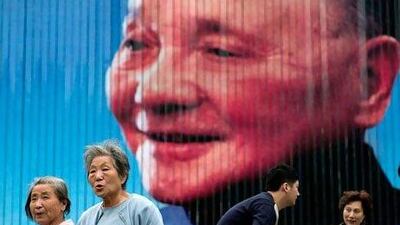When he first came to China in 1975, Orville Schell, an author and academic, said he could never have imagined the transformation that has since taken place, driven by furious economic growth over three decades.
Building Brics Emerging giants
Keep pace with the emerging economic powerhouses Brazil, Russia, India, China and South Africa Learn more
"It was unthinkable that anything you see today could've been possible," he says. "There was not one scintilla of evidence that Mao's revolution would do the U-turn it did and much less come to this. How did it happen?"
Recent events have emphasised the magnitude of developments, with China accumulating vast financial reserves thanks to its trade surplus, and becoming the world's second-largest economy.
"It's come to this: the Europeans are coming over here, begging for money. America is paralysed and broke. The Chinese have this vast store of capital. Who would've expected it?" says Mr Schell, the Arthur Ross director of the Center on US-China Relations at the Asia Society in New York.
Mr Schell is conducting a wide-ranging study of the past century of Chinese history, trying to identify the factors that have resulted in China's economic boom. His research will form the basis of a forthcoming book.
The modern Chinese economic take-off is typically attributed to Deng Xiaoping, who took control two years after the death in 1976 of Mao Zedong, communist China's first paramount leader.
Deng's policy of economic liberalisation - he is famously said to have insisted that some people be allowed to "get rich first", a notion that was at the time anathema in the communist country - was advanced in the south of China, allowing the Pearl River Delta to become a global centre for manufacturing.
Until Deng, Mr Schell has observed, there was a series of movements in the 20th century aimed at sparking economic growth and ultimately returning China to what many Chinese felt was their deserved place as a global power. Yet the nationalists and others who followed the downfall of China's feudal traditions in 1911 all fell by the wayside, and the country remained economically backward. For much of the 20th century, Mr Schell says, China was on a series of "catastrophic dead ends", and no one was able to breathe life into the stagnant economy in the way intended.
Mr Schell's counter-intuitive thesis is that it is Mao, the man who lambasted "capitalist roaders" and other "rightists", who unintentionally laid the groundwork for China's economic reforms. Key was his destructive Cultural Revolution of 1966 to 1976, which took aim at traditional Chinese culture, which Mao blamed for holding the country back.
"Mao comes along and he takes a bulldozer to the whole thing. He did something … that allowed Deng Xiaoping to do what he did," Mr Schell says. "He put a stake through the heart of Chinese culture, this thing that for 100 years Chinese reformers and intelligentsia could not escape from."
By casting aside what many saw as moribund cultural practices and traits, Mao paved the way, Mr Schell believes, for the country's economic reforms, even if those ran directly counter to Mao's economic vision.
"The analogy is Europe after the Second World War. It was bombed to the ground. It had to be rebuilt. If it hadn't been bombed,it wouldn't have been rebuilt with such vigour," Mr Schell says.
With China now fuelled by a burning ambition to cement its position as a global and economic power, the question is how long it can continue its economic ascent, with the economy continuing to grow by more than 9 per cent a year.
Many have asked whether China's investment-driven growth is sustainable, and the huge stimulus package that helped China get through the global downturn relatively unscathed has caused local authorities to accumulate vast debts, a potential concern for the future.
"It's been pretty surprising that for 20 years this proposition has been onwards and upwards," Mr Schell says. "You see problems everywhere, and no one recognises the problems more than the leaders … Nothing goes on like this forever. China has had a good run. They're due for a downturn."
twitter: Follow and share our breaking business news. Follow us


